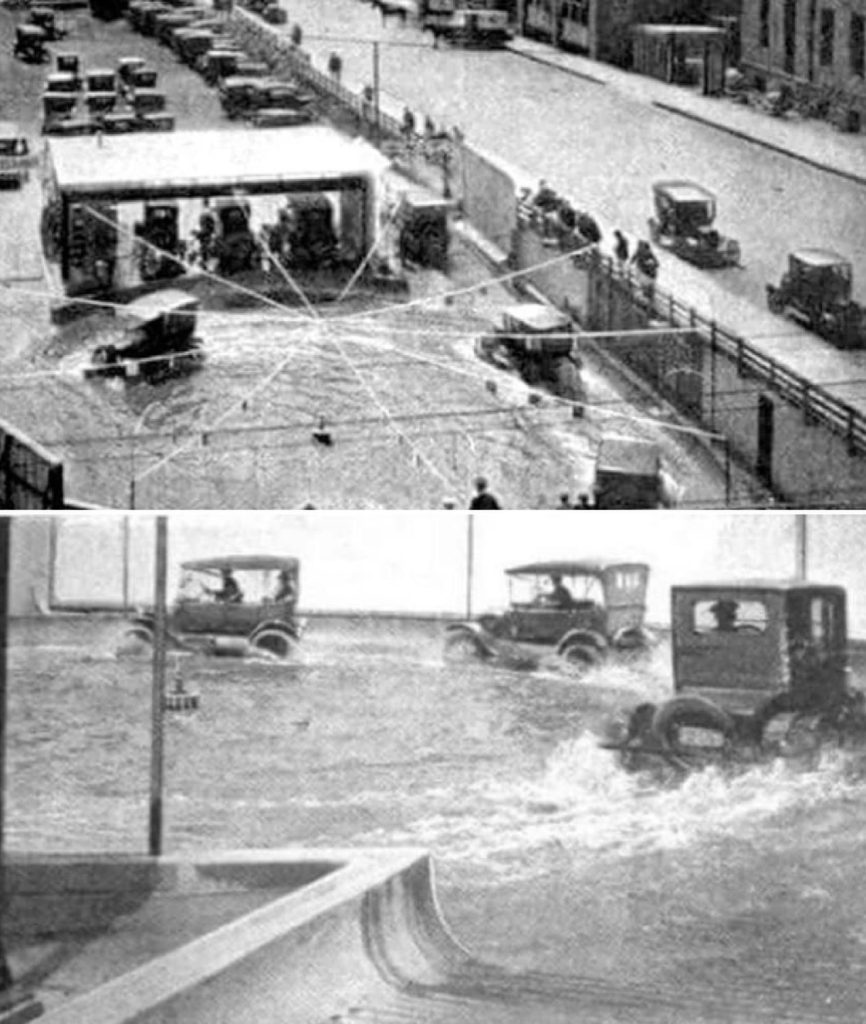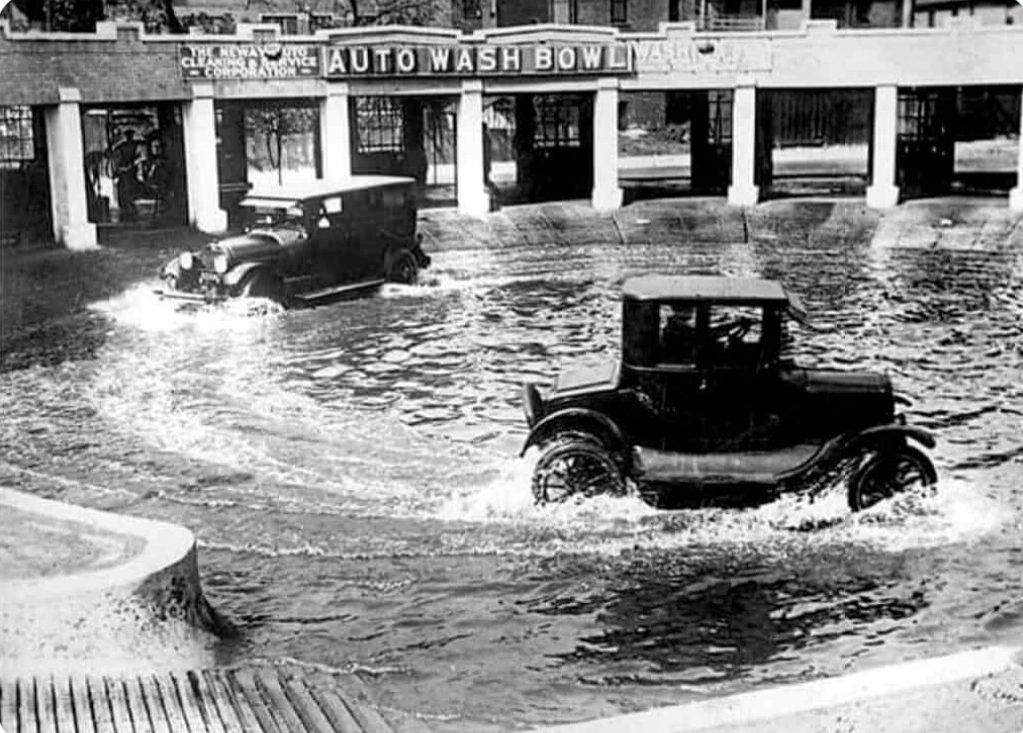In the 1920s, Drivers Would Slowly Cruise Through a Shallow, Flooded ‘Auto Wash Bowl’ to Rinse Mud Off the Undercarriage—Then Pull Into a Stall for a Proper Hand Wash
Long before the days of automated tunnels, foam rollers, and touchless spray systems, there was the auto wash bowl. It sounds almost elegant, like something you’d find in a luxury resort spa. But in reality, it was a shallow, concrete depression filled with water—designed not for relaxation, but for rinsing the thick, stubborn mud off early 20th-century automobiles.
Back in the 1920s, the roads weren’t like they are today. Pavement was limited, especially outside cities. Most roads were muddy, dusty, or a mess of gravel and dirt that would cling to tires and coat the undercarriage with filth after just a short drive. For new car owners—who at the time were still something of a novelty—keeping your vehicle clean was both a point of pride and a practical necessity. Rust, grime, and hardened mud could wear down parts quickly. But washing a car by hand from top to bottom, especially after a countryside trip, was a real task.
So cities like Chicago came up with an idea. These large, round “auto wash bowls” were built at select service stations. The concept was simple: drivers would cruise through slowly, tires dipping into a shallow pool that circulated clean water. The aim wasn’t to give the car a shiny, showroom finish—it was to clean underneath, to knock off the mess from the parts people didn’t see. And once the rinse was done, cars were pulled into a nearby bay for attendants to finish the job by hand. That’s where the polishing happened. That’s where the wax came out. The bowl just laid the foundation.

What’s wild is how futuristic this setup must’ve felt at the time. Most people didn’t even have indoor plumbing in the 1920s, but here you were, driving through a water feature like your car was taking a luxurious soak. There were no moving brushes, no soap jets, no fancy sensors. Just gravity, water, and a good eye on the steering wheel so you didn’t veer off too far. And yet, it worked. It did what it was supposed to do. It was the earliest version of the modern drive-through wash—primitive, but strangely efficient.
It also had a certain charm. These weren’t cold, robotic car washes run by machines. They were busy, human-filled spaces with sounds of laughter, water sloshing, and the chime of metal tools tapping against fenders. You could imagine the scene: one guy waving you forward through the bowl, another prepping your towels in the stall, a kid offering to wipe your windows for a nickel. It wasn’t just car maintenance—it was a little social moment. A slice of 1920s life.
And perhaps the most poetic part of all this is how we’ve come full circle. Today, modern car wash businesses talk endlessly about “undercarriage cleaning,” pitching it as a high-tech, premium feature. But in truth, that feature is over a hundred years old. The people who built the wash bowls knew how important the bottom of a car was. They knew that dirt didn’t just sit on the hood—it gathered in the places you couldn’t see. Their solution? A quiet, simple pool of water that did its job, without fuss.
Of course, we’ve evolved. Now we have spinning brushes, hot wax applications, and automatic dryers that leave no streaks. But there’s something deeply nostalgic about the old method. It reminds us that innovation doesn’t always mean complexity. Sometimes, it’s about designing around what’s practical. Sometimes, it’s just about cleaning the parts that matter.
And even now, if you find old service stations in archived city records or dusty photographs, you’ll spot remnants of those wash bowls—cracked concrete rings that once shimmered with water, and helped early drivers care for their brand-new Ford Model T’s. It’s a hidden part of history. Most people never heard of it. But it paved the way—literally and figuratively—for the massive car wash industry we know today.
The auto wash bowl wasn’t a joke. It was genius for its time. And looking at the photo now, you can almost hear the splash of tires, feel the cool air off the surface, and picture a 1920s gentleman, hat tilted back, admiring his half-clean car before rolling up his sleeves for the final hand-polish.

Daniel Reed is a curious mind with a passion for breaking down how the world works. With a background in mechanical engineering and digital media, he turns complex ideas into easy-to-understand articles that entertain and inform. From vintage tools and modern tech to viral internet debates and life hacks, Daniel is always on the hunt for the “why” behind the everyday. His goal is simple: make learning feel like scrolling through your favorite feed — addictive, surprising, and fun.
